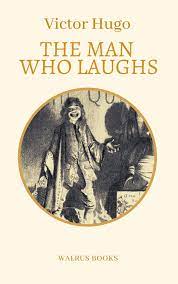
numerous tricks: he knows how to ventriloquize and transmit any sounds, cook healing decoctions, he is a wonderful
poet and philosopher. Together with their tame wolf Gomo, who is not a pet, but a friend, helper, and participant in
the show, they travel all over England in a wooden cart decorated in a very unusual style. On the walls was a long
treatise on the rules of etiquette of the English aristocrats and no less than a short list of the possessions of
all those in power. Inside this chest, for which Gomo and Ursus themselves acted as horses, there was a chemical
laboratory, a chest with belongings, and a stove.
In the laboratory, he brewed drugs, which he then sold, enticing people with his ideas.
Despite his many talents, he was poor and often went without food. His inner state has always been the dull rage,
and the outer shell – irritation. However, he chose his own fate when he met Gomo in the forest and chose to wander
instead of living with a lord.
He hated the aristocrats and considered their government evil – but he still painted the
wagon with treatises about them, considering it a little contentment.
Despite the persecution of the comprachos, Ursus still managed to avoid trouble. He
himself did not belong to this group, but he was also a vagabond. The Comprachicos were gangs of wandering Catholics
who turned children into freaks for the amusement of the public and the royal court. To do this, they used various
surgical methods, deforming the emerging bodies and creating dwarf jesters.
Part One: The Cold, the Hangman, and the Baby
The winter from 1689 to 1690 was truly severe. At the end of January, a Biscay urca
stopped in Portland Bay, where eight men and a small boy began to load chests and provisions. When the work was
done, the men sailed away, leaving the child to freeze to death on the shore. He meekly accepted his share, setting
off on a journey so as not to freeze to death.
On one of the hills, he saw the body of a gallows drenched in resin, under which lay
shoes. Even though the boy himself was barefoot, he was afraid to take the shoes of a dead man. The sudden wind and
the shadow of a crow frightened the boy, and he rushed to run.
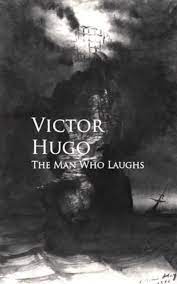
One Meanwhile, at the urk, the men rejoice at their departure. They see that the storm is coming and decide to turn
to the west, but this does not save them from death. The ship somehow miraculously remains intact after it hit the
reef, but it turned out to be overflowing with water and sank to the bottom. Before the team perishes, one of the
men writes a letter and seals it in a bottle.
A boy wanders through a snowstorm and stumbles upon a woman’s footprints. He walks along
them and stumbles upon the body of a dead woman in a snowdrift, next to which lies a living nine-month-old girl. The
kid takes it and goes to the village, but all the houses are locked.
In the end, he found shelter in Ursus’ wagon. Of course, he did not particularly want to
let the boy and the baby girl into his house, but he could not leave the kids to freeze. He shared his dinner with
the boy and fed the baby with milk.
When the children fell asleep, the philosopher buried the dead woman.
In the morning, Ursus discovered that the mask of laughter was frozen on the boy’s face,
and the girl was blind.
Part two: aristocrats and kings
Lord Linnaeus Clencharlie was a “living fragment of the past” and was an ardent
Republican who did not defect to the restored monarchy. He himself went into exile on Lake Geneva, leaving a
mistress and an illegitimate son in England.
The mistress quickly got along with King Charles II, and the son David Derry-Moir found
a place for himself in court.
The forgotten lord found his lawful wife in Switzerland, where his son was born.
However, by the time James II ascended the throne, he had already died, and his son had mysteriously disappeared.
The heir was David Derry-Moir, who fell in love with the beautiful Duchess Josiane, the king’s illegitimate
daughter.
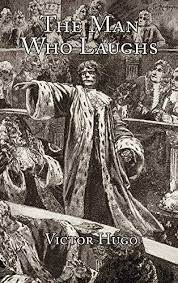
the legitimate daughter of James II, became queen, and Josian and David still did not get married, although they
liked each other very much. Josian was considered a depraved virgin since her numerous love affairs were not limited
by modesty, but by pride. She couldn’t find someone worthy.
Queen Anne, an ugly and stupid person, envied her half-sister.
David was not cruel, but he adored various cruel entertainments: boxing, cockfighting,
and others. He would often infiltrate such tournaments disguised as a commoner and then, out of kindness, pay for
all the damage. His pseudonym was Tom-Jim-Jack.
Barkilfedro was at the same time a triple agent who watched the queen, Josiane, and
David at the same time, but each of them considered him his reliable ally. Under the patronage of Josiane, he
entered the palace and became an opener of ocean bottles: he had the right to open all the bottles thrown onto land
from the sea. He was sweet on the outside and wicked on the inside, sincerely hating all his masters, especially
Josiane.
Part Three: Tramps and Lovers
Guillain and Dea stayed with Ursus, who officially adopted them. Ghuiplain began to work
as a buffoon, luring buyers and spectators who could not help laughing. Their popularity was prohibitive, which is
why the three tramps were able to acquire a new large wagon and even a donkey – now Homo did not need to pull the
cart on himself.
Inner beauty
Deya grew up into a beautiful girl and sincerely loved Guiplain, not believing
that her lover was ugly. She believed that if he was pure in soul and kind, then he could not be
ugly.
Deja and Guiplain literally idolized each other, their love was platonic – they did not
even touch each other. Ursus loved them as his children and rejoiced in their relationship.
They had enough money not to deny themselves anything. Ursus was even able to hire two
gypsies to help around the house and during performances.
Part Four: The Beginning of the End
In 1705, Ursus and his children arrived in the vicinity of Southwark, where he was
arrested for public speaking. After a long interrogation, the philosopher is released.
Meanwhile, David, under his guise of a commoner, becomes a regular spectator of
Gwynplaine’s performances, and one evening he brings Josiana to see the freak. She understands that this particular
young man should become her lover. Gwynplaine himself is struck by the beauty of the woman, but he still sincerely
loves Dea, whom he has now begun to dream of as a girl.
The Duchess sends him a letter inviting him to her place.
Part Five:
Devotion and the Iron Rod Gwynplaine suffer all night, but in the morning she
decides to refuse the Duchess’s invitation. He burns the letter, and the artists start breakfast.
However, at that moment, a staff-bearer arrives and takes Gwynplaine to jail. Ursus
secretly follows them, although by doing so he breaks the law.
In prison, the young man is not tortured – on the contrary, he becomes a witness to the
terrible torture of another person who confesses to his crime. It turns out he was the one who mutilated Gwynplaine
as a child. During interrogation, the unfortunate one also confesses that in fact, Gwynplaine is Lord Fermen
Clencharlie, a peer of England. The young man collapses.
In this Barkilfedro sees an excellent occasion for revenge on the duchess, since she is
now obliged to marry Gwynplaine. When the young man comes to his senses, he is taken to his new quarters, where he
indulges in dreams of the future.
Brief summary of the novel Les Misérables Hugo Victor Hugo’s masterpiece “Les
Misérables” remains a very popular word today, which is also confirmed by the many options for its adaptation and
theatrical productions.
In our next article, we will learn more about the biography of Victor Hugo – an
outstanding French writer and poet, whose work left an indelible mark on the history of literature.
Part Six: Ursus Faces, Nudity, and the House of Lords
Ursus returns home, where he plays a performance in front of Dea so that she does not
notice the loss of Gwynplaine. Meanwhile, a bailiff comes to them, who demands that the artists leave London. He
also brings Gwynplaine’s things – Ursus runs to the prison and sees how the coffin is carried out from there. He
decides that his named son is dead and begins to cry.
Meanwhile, Gwynplaine himself is looking for a way out of the palace but stumbles upon
Josiana’s chambers, where the girl showers him with caresses. However, having learned that the young man should
become her husband, he drives him away. She believes that the groom cannot take the place of a lover.
Part Six: The Disguises of Ursus The Queen summons Gwynplaine to her side and sends him
to the House of Lords. Since the rest of the lords are old and blind, they do not notice the freak of the newly
minted aristocrat, and therefore listen to him first. Gwynplaine talks about the poverty of the people and their
troubles, that the country will soon be overwhelmed by a revolution if nothing changes – but the lords only laugh at
him.
The young man seeks consolation from David, his half-brother, but he slaps him and
challenges him to a duel for insulting his mother.
Gwynplaine flees the palace and stops on the banks of the Thames, where he reflects on
his former life and how he let his vanity overwhelm him. The young man realizes that he himself has exchanged his
real family and love for a parody, and decides to commit suicide. However, the appearance of Gomo saves him from
such a step.
Conclusion: the death of lovers
The wolf brings Gwynplaine to the ship, where the young man overhears his adoptive
father talking to Dea. She says that she will soon die and go after her lover. In delirium, she begins to sing – and
then Gwynplaine appears. However, the girl’s heart cannot withstand such happiness and she dies at the hands of a
young man. He understands that it makes no sense for him to live without his beloved and throws himself into the
water.
Ursus, who lost consciousness after the death of his daughter, comes to his senses. Gomo
sits next to them and howls.
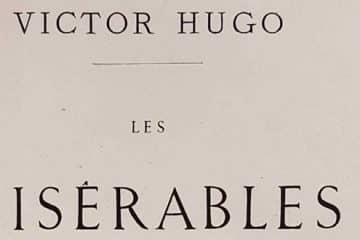


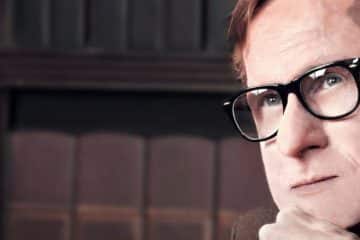

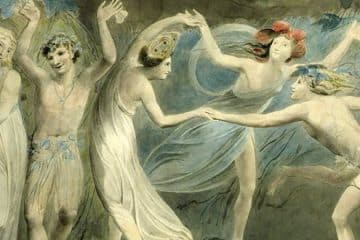
This is a really interesting story, which I like because of its atmosphere and simplicity, the feelings of the main characters are conveyed skillfully and coolly, as only Hugo can do with his characteristic feature, for me this novel is something iconic, such that it reproduces for us the reality of that time, era, dark and light in its own way! Thanks to the author!!!
It was extremely difficult for me to start reading this work, because the words and images that the author paints are very difficult to perceive, and the images that are formed are difficult. However, after a little understanding of the main character’s philosophy and motivation, you begin to understand some essence. A very sad but extremely fair development of events.